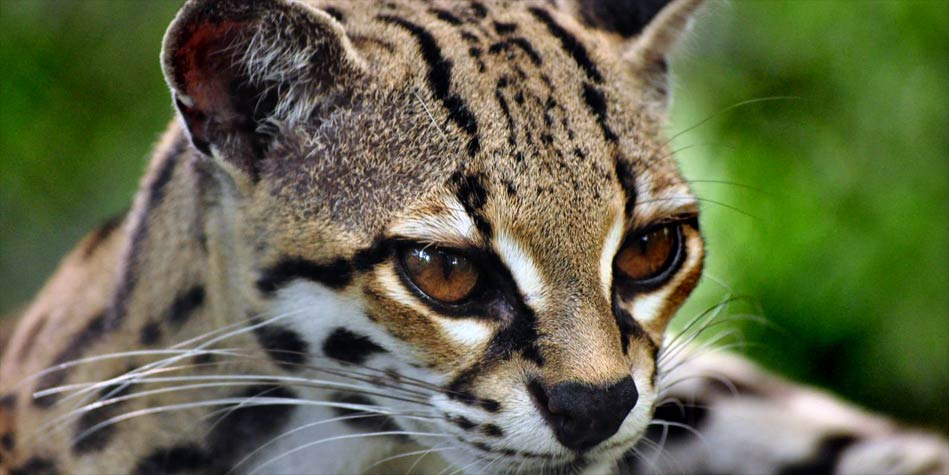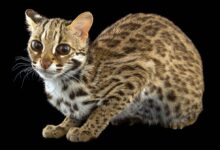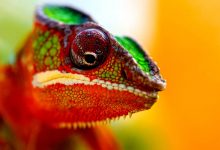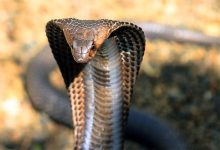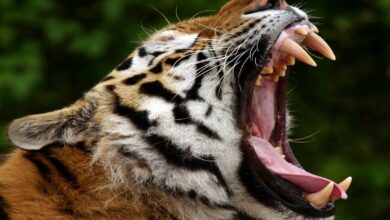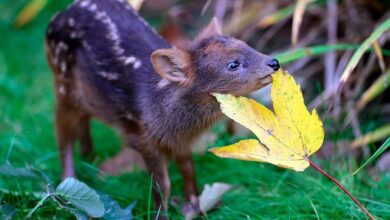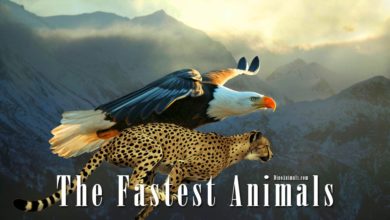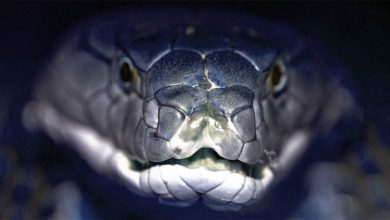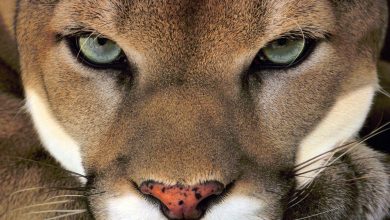Margay (Leopardus wiedii)
A tree-dwelling and nocturnal hunter. The margay is a cat with specific likes, large eyes, and beautiful spotted fur. If you remember the movie “Shrek” (who doesn’t, right 🙂 ?), you certainly remember Puss in Boots and his big eyes. If they seemed incredibly large and beautiful to you, you should get to know the main character of our today’s story, to believe that such eyes exist for real 🙂 Therefore, we move to South America to get to know the ocelot’s cousin.
Classification
- Class: Mammalia
- Order: Carnivora
- Family: Felidae
- Genus: Leopardus
- Species: Leopardus wiedii (margay)
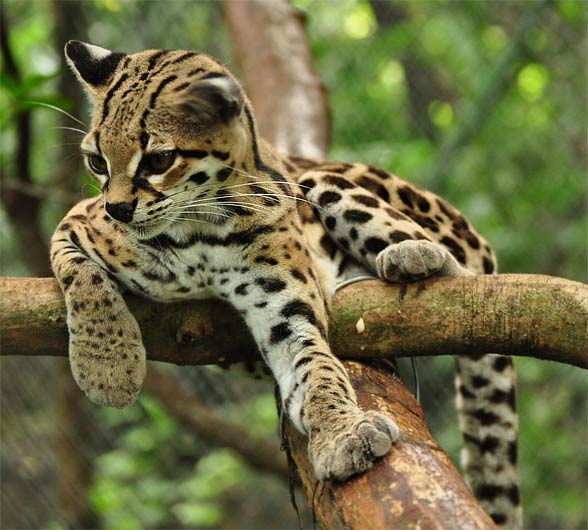
There have been 10 subspecies classed within the species:
- Leopardus wiedii amazonicus – western Brazil, central Peru, Colombia and Venezuela
- Leopardus wiedii boliviae – Bolivia
- Leopardus wiedii cooperi – northern Mexico
- Leopardus wiedii glauculus – central Mexico
- Leopardus wiedii oaxacensis – southern Mexico
- Leopardus wiedii nicaraguae – Honduras, Nicaragua, Costa Rica
- Leopardus wiedii yucatanicus – Yucatan
- Leopardus wiedii pirrensis – Panama, Colombia, Ecuador, Peru
- Leopardus wiedii salvinius – Chiapas, Guatemala, El Salvador
- Leopardus wiedii wiedii – eastern and central Brazil, Paraguay, Uruguay, northern Argentina
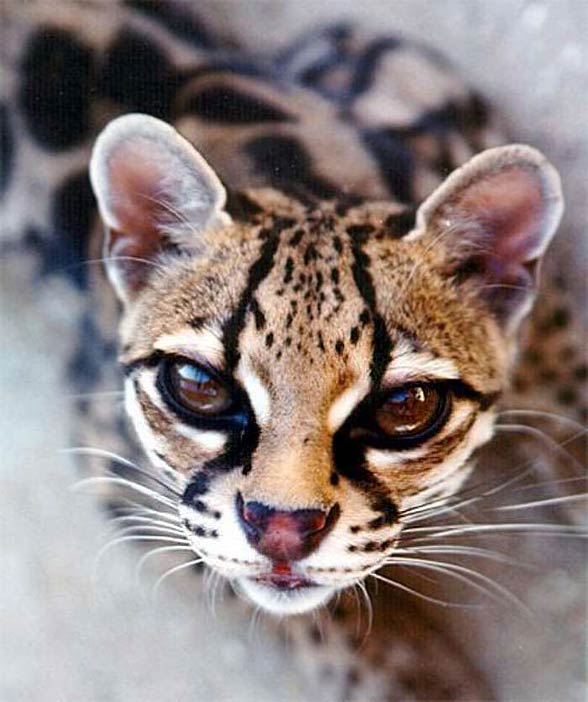
Occurrence
The margay inhabits rainforests in southern Mexico, Central America and the northern part of Latin America, east to the Andes. The southern range of distribution includes Uruguay and northern Argentina. The margay lives only in dense forests – from evergreen jungles, to tropical dry forests, to extensive cloud and riparian forests; sometimes it’s also found on shadowy cocoa and coffee plantations.
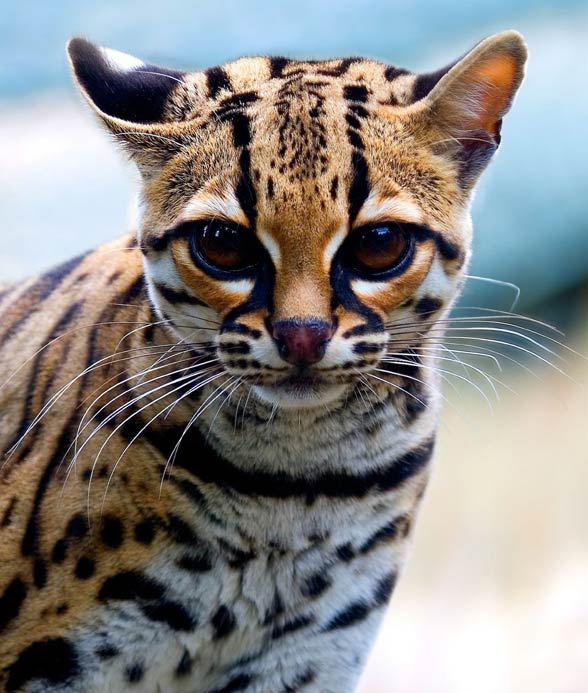
Characteristics
Appearance
The margay is often confused with its close relative – the ocelot (Leopardus pardalis), because the pattern and coloration of their coats are very similar: the fur is covered with irregular, long spots and markings with black edges, the “background” is light brown, sometimes yellowish, or even orangish. The undersides are buff or white.
The fur is thick and soft, the tail – long, used as an aid in keeping balance while climbing trees, it has many dark rosettes and a black tip. The outside part of the ears is black, and there is a white rounded marking in the center.
Thanks to big eyes, the margay is able to see well at night. Despite big similarities to the ocelot, the margay differs from it with the appearance of the head which is slightly shorter, the eyes are bigger, and the limbs – longer. The size of the margay is close to the size of its abovementioned cousin, and another relative – the oncilla/tiger cat (Leopardus tigrinus).
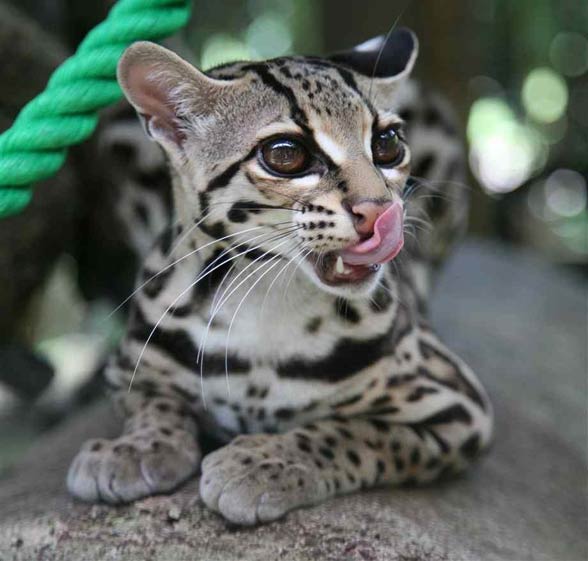
Good climber
The margay is a better climber than the rest of cats of the Leopardus genus, therefore, it’s often called the tree ocelot. While the ocelot hunts on the ground, the margay can spend its whole life on trees, jumping from one tree to another, capturing birds and monkeys. It’s one of two cat species that have flexible ankles that help climb up and down a tree (the clouded leopard is the other species).
While observing a domestic cat climbing down a tree, we can see that its tail is directed towards the ground, and the margay climbs down with its head first; the cat is also characterized by its impressive, as for a cat, agility – its ankles can rotate by 180 degrees, so the cat can grasp branches with both the hind and fore paws.

Diet and hunting
For the margay is mostly nocturnal and it’s difficult to observe, the majority of information about its diet comes from the samples of feces and stomach contents. The margay feeds on small mammals (including monkeys), birds, eggs, lizards, and frogs. It can also eat grass and other plants, probably in order to facilitate digestion.
A report from 2006 on the margay showed that the animal is able to hunt only on trees, although it can chase animals on the ground, such as cane rats or guinea pigs. Additionally, it was proved that the margay uses auditory mimicry to lure its prey – sounds made by a margay that resembled cries of a young pied tamarin (Saguinus bicolor) were recorded in the vicinity of a group of these monkeys.
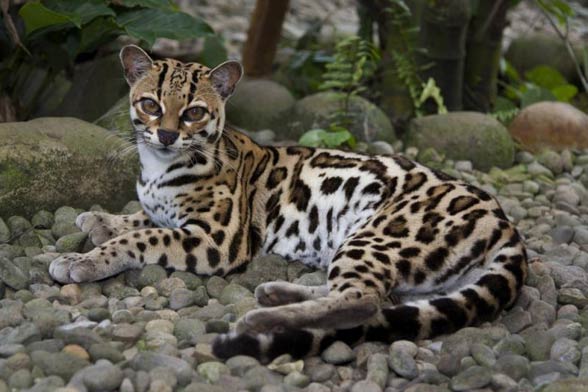
Behavior
The margay is considered to be a “night owl”, although in some areas it was seen hunting in the daytime. The margay spends the majority of its life on trees, but it can walk on the ground, especially when it changes its hunting territory. The margay spends its days resting in inaccessible tree branches or among lianas.
It is solitary, and it pairs with the opposite sex only in the mating season. The margay has rather small chances of meeting another margay on its way, because the range of territories looks like a chess board, and the acreage of an individual is large – from 11 to 16 km2 (4 to 6 mi2). To mark its territory, the margay uses its urine which it spreads on the ground and branches. Vocalizations are not the basis of interspecies communication.
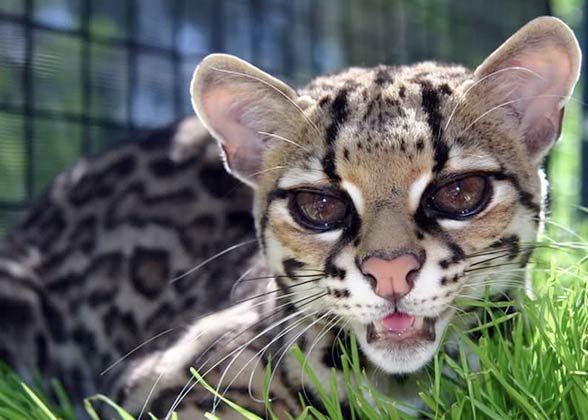
Reproduction
Rooting in females lasts for 4-10 days within a 32-36-day cycle. In this time, they call males with long, moaning sounds. Males react to them with a sort of yelping sounds and shaking their heads from side to side. Similar behaviors haven’t been observed in any other cat. Copulation is short – it lasts about 60 seconds and resembles a copulation of the domestic cat, but it takes place in trees, several times in estrus.
Gestation is about 80 days long, and one kitten is usually born (rarely two). Kittens are born mostly between March and June. They weigh 85-170 g (3-6 oz), so they are relatively big as for newborn kittens. They open their eyes after about 2 weeks, and after 8 weeks they can eat solid food. They become sexually mature at 12-18 months of age.
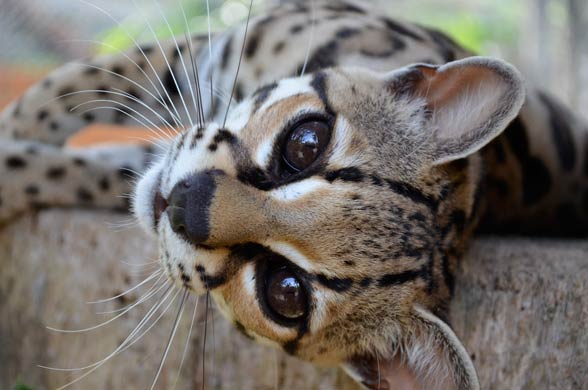
Detailed information and measurements
Margay (Leopardus wiedii)
- Length: 48–79 cm (18.9-31 in)
- Height at shoulders: 30–45 cm (12-17 in)
- Tail length: 33–51 cm (13-20 in)
- Weight: 2,6–9 kg (5.7-20 lb)
- Lifespan: to 24 years in captivity

Margay (Leopardus wiedii) – interesting facts
- The Latin name of the species refers to Prince Maximilian of Wied-Neuwied – a German traveler, naturalist and ethnologist from the turn of the 18th and 19th centuries.
- Fossils of a margay or a similar cat were found in Florida and Georgia in geological formations developed in the Pleistocene, which suggests that the animal inhabited a much larger area than today.
- The tail constitutes 70% of the whole body length of the margay.
- Contrary to other cats, the margay has only two nipples.
- Apart from the margay, the clouded leopard (Neofelis nebulosa) is a cat that can rotate its ankles.
- The margay is able to jump horizontally from one tree to another for 3.7 meters (12 ft).
- It was often observed that the margay held a branch only with one paw and hang from a tree in such a position.
- There is a high rate of mortality among kittens (about 50%), and there are also problems with reproduction in captivity because of the decrease in population of these cats, which leads to a varied gene pool, and this makes the introduction of new populations to the natural environment very difficult.
- The margay is on the verge of extinction because it is often the prey of poachers who see profits from its beautiful fur. Destruction of habitats is another cause of the decrease in population.
- About 14,000 of these mysterious animals die every year. They are killed mostly because of their beautiful fur… 🙁
- An interspecies hybrid of a margay and a domestic cat started a new breed: the Bristol.
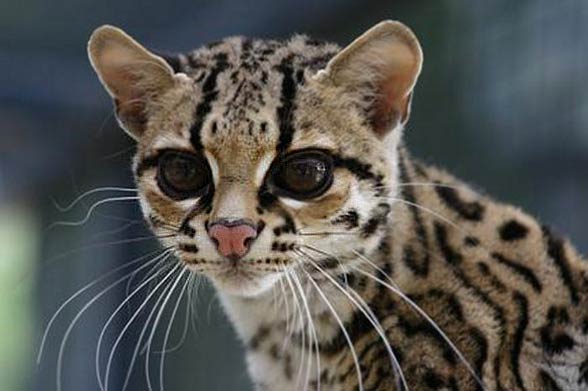
Recommended
- Persian leopard
- Amur leopard
- Siberian tiger
- Bengal tiger
- Sumatran tiger
- Indochinese tiger
- Malayan tiger
- South China tiger
- Tigers
- White tigers
- Lions
- White lions
- Lion vs tiger
- Liger
- Lynx
- Canada lynx
- Serval
- Ocelot
- Animal fights
- American lion
- European cave lion
- Smilodon – Saber-toothed tiger
- Fights of animals
- Big cats
- Black panther
- Leopard
- Snow leopard
- African Lion
- Fastest animals
- Fastest birds

